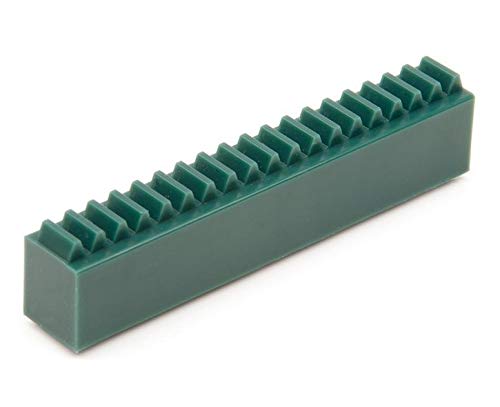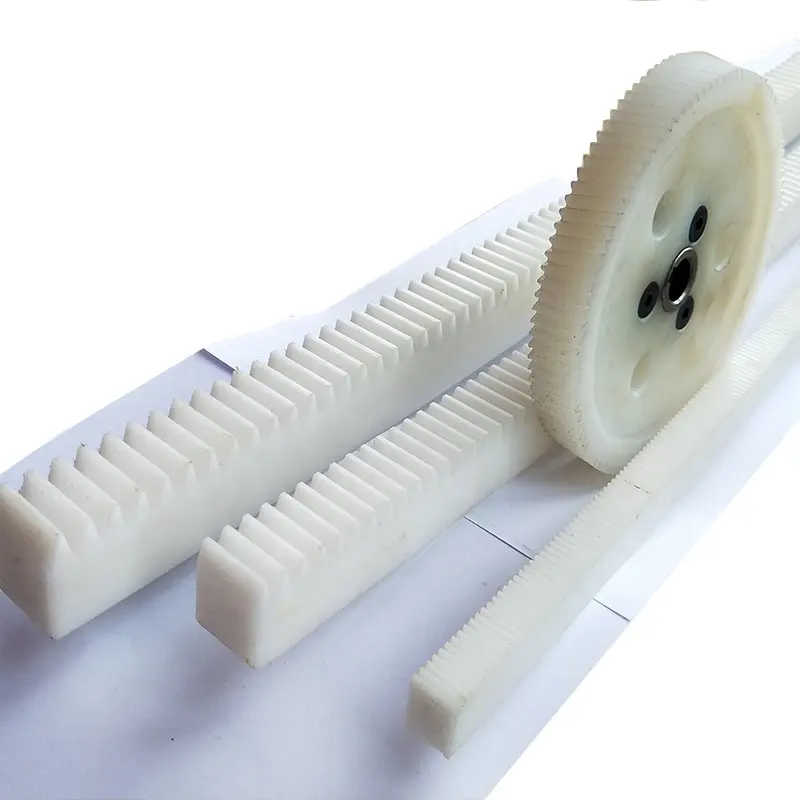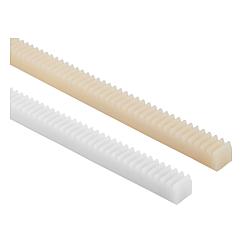Product Description
Greenhouse ventilation system rack and pinion
Why Powdered Metals?
Significant cost savings.
Create complex or unique shapes.
No or minimal waste during production.
High quality finished products.
Strength of materials.
Production process of powder metallurgy
Powder mixing – Forming – Sintering – Oil impregnation – Sizing -Ultrasonic cleaning – Steam oxidation – Oil impregnation – Final inspection – Packing
Company Profile
JINGSHI established in 2007
Manufacturer & Exporter
Exacting in producing powder metallurgy gears and parts
Passed ISO/TS16949 Quality Certificate
Advanced Equipment
Numbers senior R & D engineers and Skilled operators
Precise Examination Instruments.
Strict Quality Control
With the “More diversity, More superior, More professional ” business purposes, we are committed to establish long-term friendship and CHINAMFG relationship with domestic and international customers to create a bright future .
Certification
Just contact with us with 2D or 3D drawing to start our cooperation!
| Type: | Commercial Greenhouse |
|---|---|
| Size: | Large |
| Cover Material: | Glass |
| Layer: | Single |
| Treatment: | Heat Treatment |
| Surface: | Shot Blasting |
| Samples: |
US$ 1/Piece
1 Piece(Min.Order) | |
|---|
| Customization: |
Available
| Customized Request |
|---|

How does the design of the rack and pinion affect its performance?
The design of the rack and pinion plays a crucial role in determining its performance characteristics and overall effectiveness. Various design factors influence the functionality, efficiency, and reliability of the rack and pinion system. Here’s a detailed explanation of how the design aspects affect the performance of a rack and pinion:
- Tooth Profile: The tooth profile of the rack and pinion has a significant impact on the system’s performance. Different tooth profiles, such as straight, helical, or involute, offer varying benefits in terms of load distribution, efficiency, backlash reduction, and quiet operation. The selection of the tooth profile is based on factors such as the application requirements, load capacity, speed, and desired smoothness of motion.
- Module and Pitch: The module and pitch of the rack and pinion refer to the size and spacing of the teeth. These parameters affect the system’s ability to transmit forces efficiently and accurately. A finer module and pitch provide smoother motion and higher precision but may have limitations in terms of load capacity. Coarser module and pitch are suitable for higher load applications but might result in slightly rougher motion.
- Material Selection: The choice of materials for the rack and pinion is critical for performance and durability. The materials need to have sufficient strength, wear resistance, and fatigue resistance to withstand the operating conditions and loads. Common materials used for rack and pinion include steel alloys, stainless steel, and specialized alloys. The selection depends on factors such as load requirements, environmental conditions, and the desired service life of the system.
- Lubrication: Proper lubrication is essential for optimal performance and longevity of the rack and pinion system. The design should facilitate efficient lubricant distribution to minimize friction, wear, and heat generation. Lubrication considerations include factors such as the lubricant type, method of application, and frequency of maintenance. Inadequate lubrication can lead to increased friction, reduced efficiency, and premature failure of the system.
- Backlash Control: Backlash refers to the play or clearance between the teeth of the rack and pinion. The design should aim to minimize backlash to ensure accurate and precise motion. Backlash can be controlled through various design features, such as tooth modifications, preloading mechanisms, or anti-backlash devices. Minimizing backlash is crucial in applications that require high positional accuracy and repeatability.
- Mounting and Alignment: The design should consider proper mounting and alignment of the rack and pinion system. Accurate alignment ensures smooth and efficient power transmission, reduces wear, and minimizes the risk of premature failure. The design should incorporate features that facilitate easy and precise mounting, such as alignment guides, mounting holes, or adjustable components.
- Load Capacity and Stiffness: The design should be optimized to handle the anticipated load capacity and provide sufficient stiffness to resist deflection or deformation under load. Factors such as the size and cross-section of the rack, tooth geometry, and material selection influence the system’s load-bearing capability and overall rigidity. A well-designed rack and pinion should maintain stability and accuracy, even under high loads.
- Noise and Vibration: The design should address noise and vibration considerations to ensure smooth and quiet operation. Features such as tooth profile modifications, surface treatments, or dampening mechanisms can be incorporated to reduce noise and vibration levels. This is particularly important in applications where noise reduction is crucial, such as precision equipment or noise-sensitive environments.
By carefully considering these design factors, engineers can optimize the performance of rack and pinion systems for specific applications. The appropriate design choices lead to improved efficiency, accuracy, durability, and overall reliability of the rack and pinion, enhancing its performance in various industrial and mechanical systems.

How do rack and pinion systems handle variations in temperature and humidity?
Rack and pinion systems are designed to handle variations in temperature and humidity, ensuring their proper functioning and longevity in diverse environmental conditions. Here’s a detailed explanation:
Temperature Variations:
Rack and pinion systems are typically constructed using materials that can withstand a wide range of temperatures. Some common materials used for rack and pinion components include steel, stainless steel, aluminum, and various engineering plastics. These materials are chosen for their thermal stability and resistance to expansion or contraction due to temperature changes.
When exposed to temperature variations, rack and pinion systems can experience dimensional changes. However, the materials used are selected to minimize the effects of thermal expansion or contraction. Manufacturers consider the coefficient of thermal expansion of the materials and design the system with appropriate tolerances to accommodate temperature-related dimensional changes. This helps maintain the system’s accuracy and functionality over a range of operating temperatures.
In extreme temperature conditions, lubrication becomes an important consideration. High temperatures can cause lubricants to degrade, leading to increased friction and wear. To address this, specialized lubricants that can withstand elevated temperatures are used in rack and pinion systems operating in high-temperature environments. Additionally, regular maintenance and lubrication checks are recommended to ensure optimal performance and to mitigate any adverse effects of temperature variations.
Humidity and Moisture:
Humidity and moisture can affect the performance and durability of rack and pinion systems, particularly if the system is exposed to excessive moisture or operates in highly humid environments. Here are some measures taken to address these challenges:
1. Material Selection: The materials used in rack and pinion systems are often chosen for their resistance to corrosion and moisture absorption. Stainless steel, for example, is commonly used due to its excellent corrosion resistance. Similarly, certain types of engineering plastics are less susceptible to moisture absorption, making them suitable for humid environments.
2. Protective Coatings: Applying protective coatings on rack and pinion components can help enhance their resistance to moisture and corrosion. Coatings such as zinc plating, chrome plating, or specialized corrosion-resistant coatings provide an additional barrier against moisture penetration and prolong the system’s lifespan.
3. Sealing and Gasketing: Rack and pinion systems can be designed with sealing mechanisms or gaskets to prevent moisture ingress. Seals and gaskets are placed at critical points, such as the gear meshing area or the housing joints, to create a barrier against moisture and contaminants. These seals help maintain the integrity of the system, reduce the risk of corrosion, and ensure consistent performance even in humid conditions.
4. Regular Maintenance: Regular maintenance practices, including cleaning, inspection, and lubrication, are essential for rack and pinion systems exposed to humidity. Cleaning the system to remove any accumulated dirt or moisture, inspecting for signs of corrosion or wear, and applying appropriate lubrication can help mitigate the effects of moisture and ensure the system’s optimal performance and longevity.
By incorporating suitable materials, protective coatings, sealing mechanisms, and maintenance practices, rack and pinion systems can effectively handle variations in temperature and humidity. These measures help maintain the system’s accuracy, reliability, and durability, even in challenging environmental conditions.

What are the advantages of using rack and pinion for linear motion?
Rack and pinion systems offer several advantages when it comes to achieving linear motion. These mechanisms are widely used due to their efficiency, precision, and reliability. Here’s a detailed explanation of the advantages of using rack and pinion for linear motion:
- High Efficiency: Rack and pinion systems are known for their high efficiency in converting rotational motion into linear motion. The meshing of the teeth on the rack and pinion allows for a direct transfer of power, minimizing energy losses and ensuring efficient motion conversion.
- Precise Positioning: Rack and pinion mechanisms provide precise positioning capabilities. The teeth on the rack and pinion allow for accurate and repeatable linear motion, making them suitable for applications that require precise positioning, such as CNC machines, robotics, and automated systems.
- Smooth and Controlled Motion: Rack and pinion systems offer smooth and controlled linear motion. The engagement between the teeth of the rack and pinion ensures a continuous and stable transfer of motion, resulting in smooth and reliable movement without backlash or play.
- Compact Design: Rack and pinion mechanisms have a compact design, making them suitable for applications with space constraints. The linear motion is achieved along the length of the rack, allowing for a linear displacement without the need for additional mechanisms or complex setups.
- Cost-Effective: Rack and pinion systems are often cost-effective compared to other linear motion mechanisms. They have a relatively simple design and can be manufactured using common materials, which contributes to their affordability and widespread availability.
- High Load Capacity: Rack and pinion systems can handle high load capacities. The teeth on the rack and pinion distribute the load evenly, allowing for the transmission of substantial forces and enabling the handling of heavy loads in various applications.
- Durable and Reliable: Rack and pinion mechanisms are known for their durability and reliability. When properly designed and maintained, they can withstand heavy use, harsh environments, and demanding operating conditions, ensuring long-term functionality and minimal downtime.
- Wide Range of Applications: Rack and pinion systems have a wide range of applications across different industries. Their versatility makes them suitable for use in automotive steering systems, CNC machines, robotics, elevators, stage equipment, printing machinery, and many other mechanical systems.
These advantages make rack and pinion systems a popular choice for achieving linear motion in various applications. Whether it’s for precision positioning, efficient power transmission, or smooth motion control, rack and pinion mechanisms offer numerous benefits that contribute to their widespread use.


editor by CX 2023-09-25